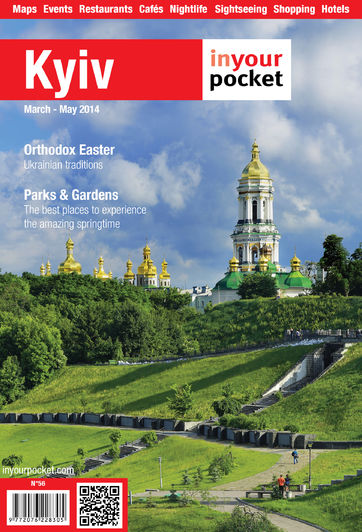Folk Architecture and Life Museum
The museum is divided into areas representing different regions of Ukraine. The clay huts roofed with thatch or wooden shingles and the archaic barns and wells recreate an authentic village atmosphere. Everything is meant to bring you back to the Ukraine of 16th to 19th centuries. At Pyrohovo you will find wooden churches, windmills, and even a school building typical of rural areas from recent centuries. Different kinds of structures (water-mills, forges, cattle-sheds “shopa”, granaries “komora”, threshing floors, “stodola” for storing cereals, apiaries, hen houses, cellars and wells) will tell you the story of how folks lived in Ukraine centuries ago. If everything at the museum seems very authentic, that’s because it really is. Most of the buildings are in fact original and were moved here piece by piece from villages all over Ukraine.
From the main entrance, the road leads you across a large wheat field to the Middle Prydniprovia sector with the Church of the Great Martyn, Saint Paraskeva Friday (Cherkassy region, 1742), the small Church of the Archangel Michael (1601), and a unique collection of windmills “vitriaky”. Next, on the hillside, you will come to the Podillia sector with the Church of Saint Nicholas and a bell tower from the beginning of the 19th century, brought here from the Husiatyn area. At the centre of the museum’s territory the Poltavschyna and Slobozhanschyna complex is arranged. A little farther on, visitors can see the Polissye sector dominated by the unique hip-roof Voskresens’ka Church (Rivnenschyna, 17th-18th century). The exposition of village huts (khatas) here is unique for their age (1587 to 1687). In the northern part of the museum, the Carpathian sector features scattered small farms, with the bell tower of the ancient Pokrovs’ka Church rising above.
But wait till you get inside these huts! There you will find stunning exhibitions of traditional Ukrainian clothing, ceramics, household and farming equipment, and of course the stove. This was the centrepiece of any khata, and was used for cooking, drying, heating and even sleeping.
Pyrohovo is also a great park - a pleasant retreat with plenty of space for playing games with kids or for a leisurely afternoon in the shade of trees. If you want to get around faster, you may rent a bike or even hire a horseback ride. And if you care for your spiritual well-being, visit the church service on Sunday. Held in one of the museum’s beautiful ancient wooden churches, it is a real adventure for your soul.
Traditional fairs are organised at Pyrohovo in May and September, to mark the beginning and the end of the season. But don’t worry if you miss them. There are plenty of festivals and celebrations going on at Pyrohovo the whole season. Main national and religious holidays are celebrated here according to folk traditions.
Website
nmnapu.org.uaMetro
Lybids’kaOpen
Open 10:00-17:00.



Comments
Реал Статус
old architecture in Kiev http://kiev-foto.info/ru/doma
Mike
Texas
You can find very interesting tours in Kiev here www.yourkievguide.com
Mila
new project on ukrainian architecture will start here: architecture.ua
Joe Rooney
My wife and I only half a day to spend here which is not nearly enough time to really appreciate Pyrohovo. Summer is a good time to visit and we throughly enjoyed the exhibits and events in progress. Had the opportunity to observe a baptism at one of the churches and folk dancing at another site. Hope to be able to come back in the winter and get a different perspective. Very knowledgeable English speaking guides were available without having to book ahead, so I was able to have everything explained in a language I understand while my wife, a native Ukrainian, got even more out of the excursion than I did. Well worth the short trip out of town to enjoy this visual treat.
Philip Frampton
Hello,I have been to your Museum,which I found very interesting. I found the site well layed out & well displayed. However I did find that there was no main office to contact people also it would be interesting to know what other activities the museum does.I have been to other similar museums in UK & Holland. The one in the UK, which was at weldendown open air museum & the open air museum in Arnhem in Holland.All the museums have there good & bad points.I just wonder if there are any courses ran by your museum for visitors & proffesionals alike